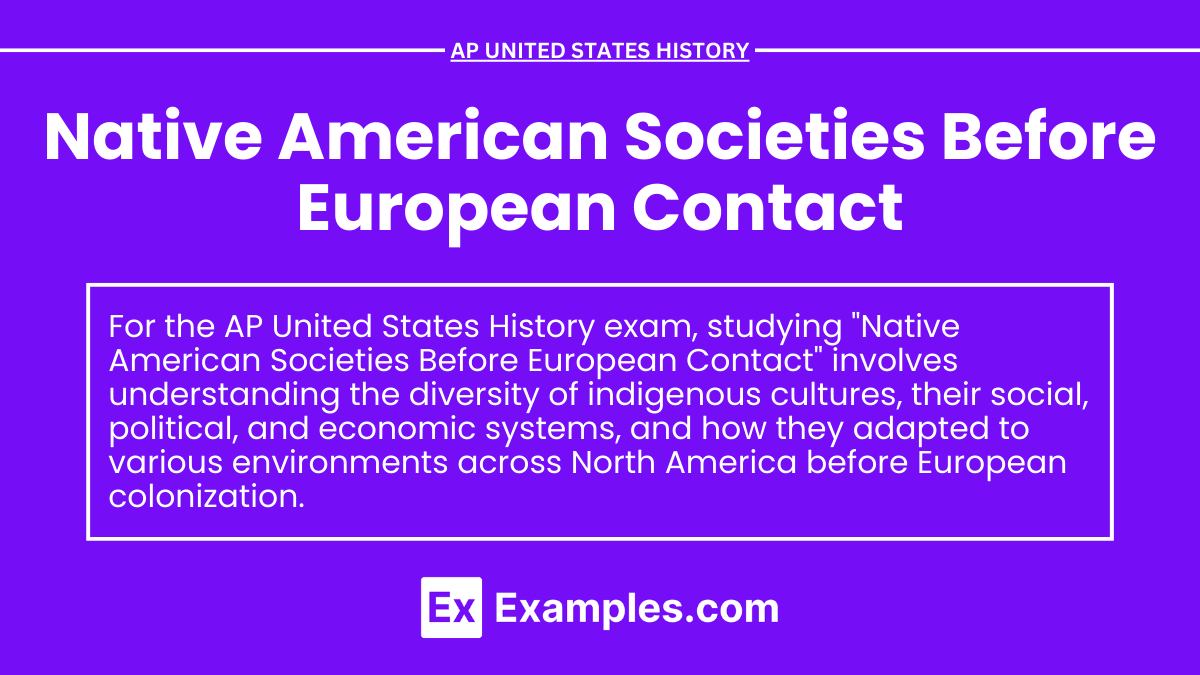In AP United States History, the study of Native American societies before European contact reveals the rich diversity and complexity of the indigenous cultures that thrived across North America. These societies, ranging from the nomadic tribes of the Great Plains to the sophisticated agricultural communities of the Southwest, developed intricate political structures, economic systems, and spiritual practices in harmony with their environments. Understanding these early societies provides crucial context for the profound changes and challenges they faced with the arrival of European settlers, marking the beginning of a transformative period in American history.
Learning Objectives
In studying Native American societies before European contact, you will be introduced to the diverse cultures and regions of indigenous peoples across North America. The economic systems, political structures, and cultural practices of various tribes will be explored. You will gain an understanding of how these societies adapted to their environments and maintained complex trade networks. The impact of these early societies on subsequent American history will also be examined, emphasizing their significance before European colonization.
Geographic Diversity and Adaptation
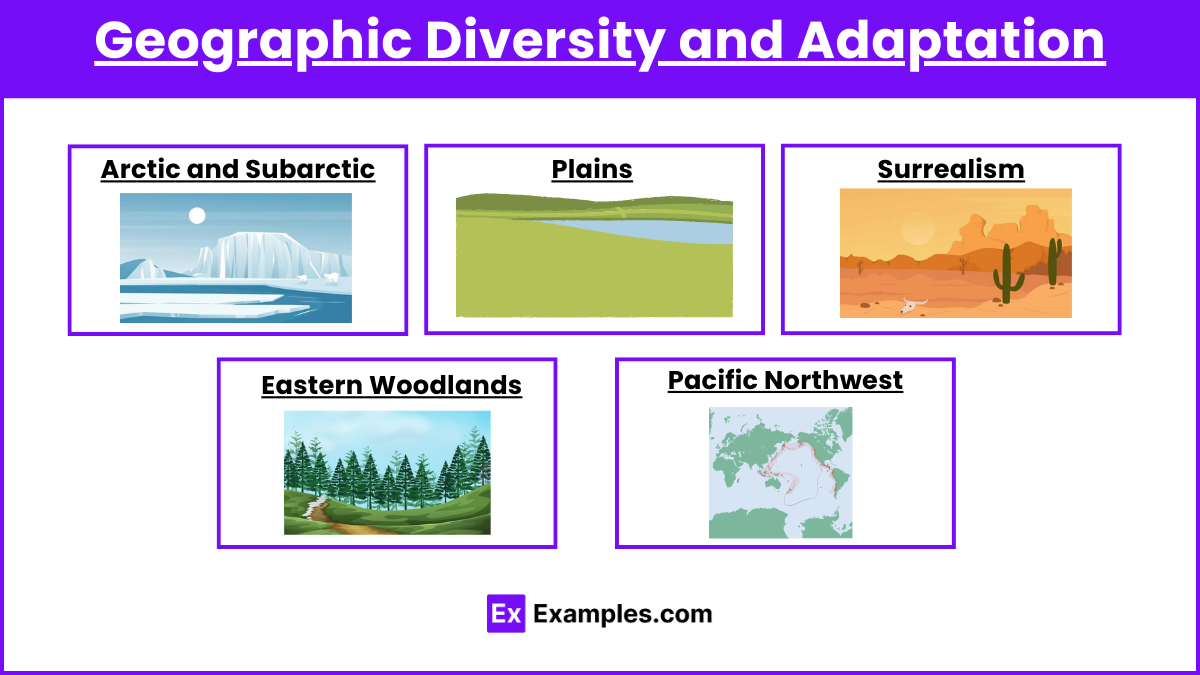
Arctic and Subarctic: Inhabitants like the Inuit and Aleut adapted to cold climates by relying on hunting marine animals like seals and whales. They lived in small, nomadic groups.
Plains: Nomadic groups like the Sioux and Comanche depended on the buffalo for food, clothing, and tools. They lived in portable tepees, which allowed them to follow herds.
Southwest: The Pueblo and Navajo developed agricultural societies in the arid Southwest, cultivating maize, beans, and squash using advanced irrigation techniques.
Eastern Woodlands: The Iroquois and Algonquian peoples practiced a mixed economy of hunting, gathering, and agriculture. They built longhouses and formed complex political alliances like the Iroquois Confederacy.
Pacific Northwest: Tribes such as the Chinook and Tlingit thrived in a resource-rich environment, relying on fishing, especially salmon, and engaging in trade. They built large, permanent settlements and developed complex social hierarchies.
Political and Social Structures
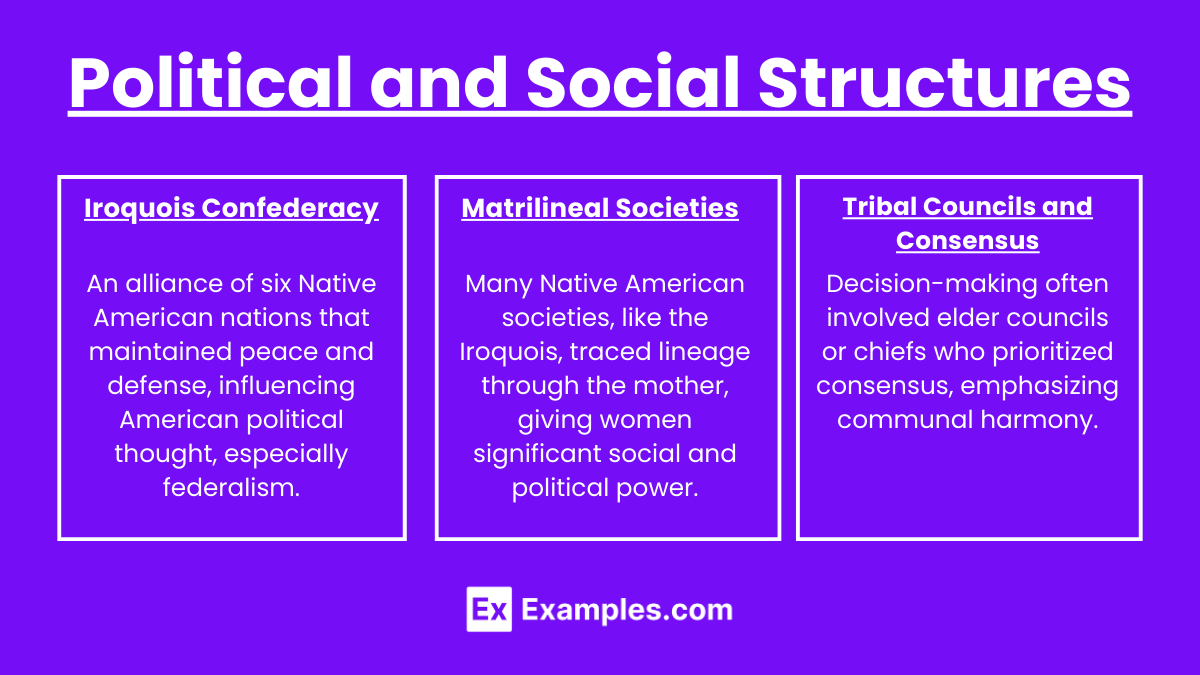
Iroquois Confederacy: An alliance of six Native American nations (Mohawk, Oneida, Onondaga, Cayuga, Seneca, and later the Tuscarora) that maintained peace and coordinated defense among its members. The Confederacy influenced later American political thought, particularly the concept of federalism.
Matrilineal Societies: Many Native American societies, such as the Iroquois, traced lineage and inheritance through the mother’s line, giving women significant power in social and political spheres.
Tribal Councils and Consensus: Decision-making often involved councils of elders or chiefs who sought consensus rather than majority rule, emphasizing communal harmony.
Economic Systems
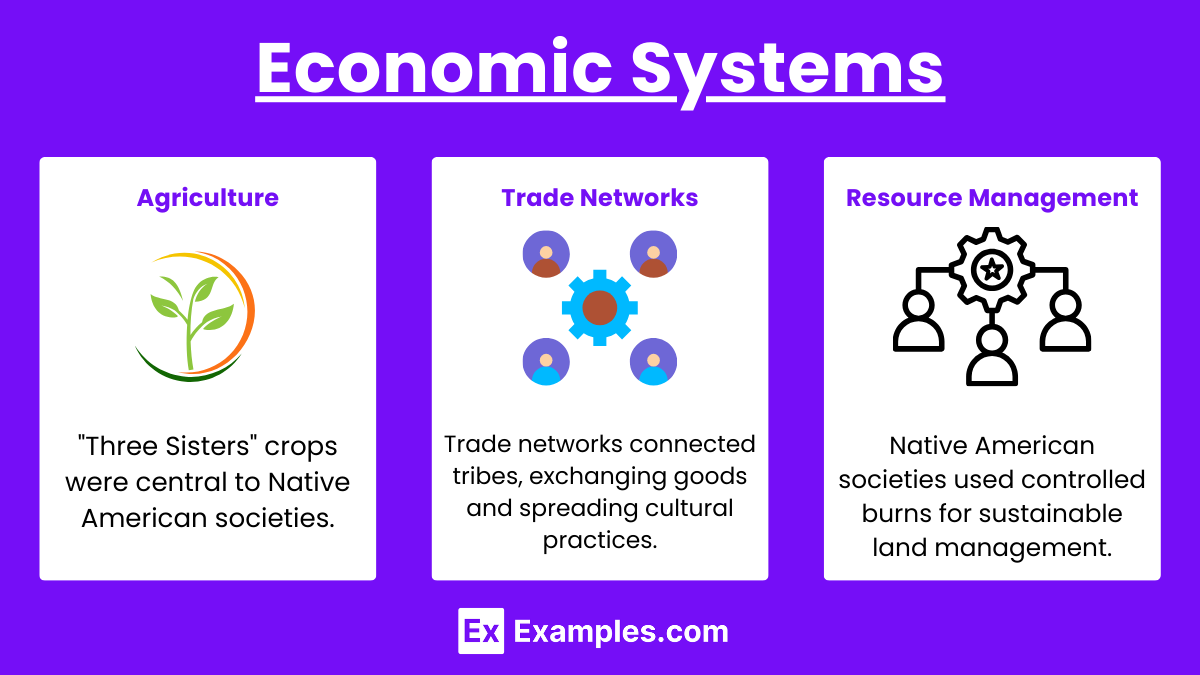
Agriculture: The domestication of crops like maize, beans, and squash (the “Three Sisters”) was central to many Native American societies, especially in Mesoamerica and the Southwest.
Trade Networks: Extensive trade networks connected distant tribes, facilitating the exchange of goods like shells, obsidian, and foodstuffs. These networks also spread ideas and cultural practices across regions.
Resource Management: Native American societies practiced sustainable resource management, such as controlled burns to clear land for agriculture or encourage the growth of certain plants.
Cultural Practices and Beliefs

Animism: A belief system where natural objects, animals, and even landscapes possess spiritual essence. This view fostered a deep connection to the environment and guided daily life and rituals.
Totem Poles: In the Pacific Northwest, tribes created totem poles that served as symbols of clan lineage, spiritual beliefs, and cultural heritage.
Potlatch: A ceremonial feast among Pacific Northwest tribes where wealth was distributed to reinforce social status and community bonds.
Architecture and Art
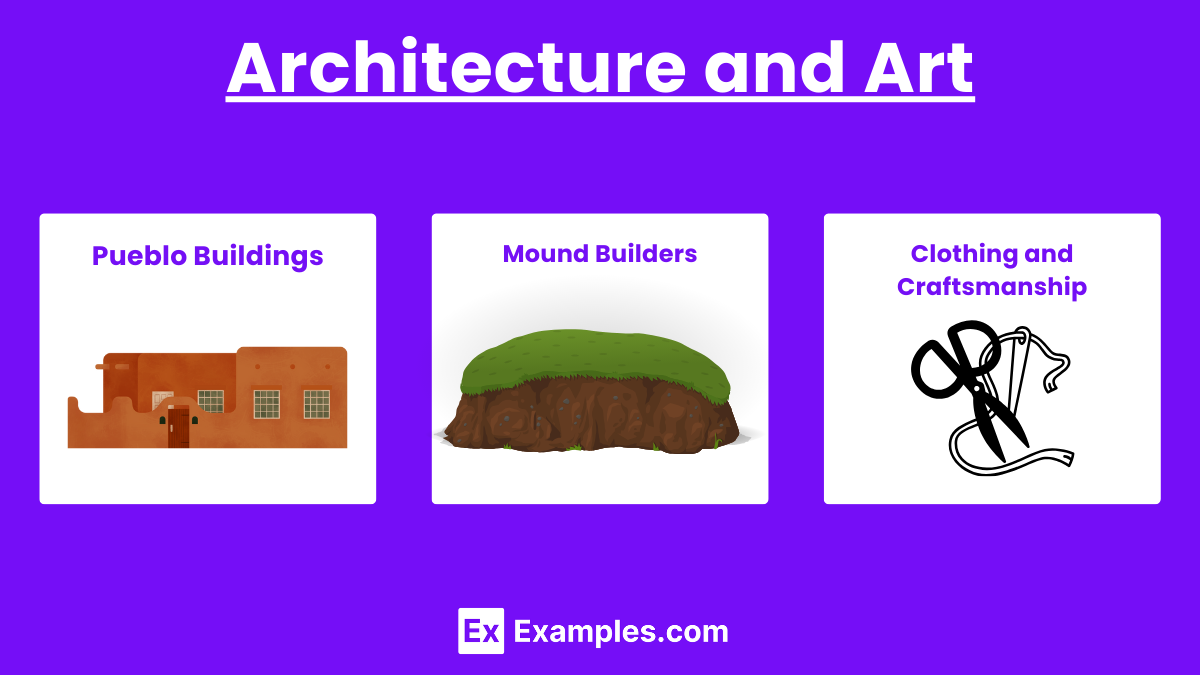
Pueblo Buildings: In the Southwest, the Pueblo people built multi-story dwellings from adobe and stone, often in cliffside alcoves for protection.
Mound Builders: Societies like the Mississippians constructed large earthen mounds for religious, political, and ceremonial purposes, such as the Cahokia Mounds near present-day St. Louis.
Clothing and Craftsmanship: Native Americans created intricate beadwork, pottery, and textiles that reflected their cultural identity and were often used in trade.
Examples
The Ancestral Puebloans: Also known as the Anasazi, they lived in the Four Corners region of the American Southwest. They built cliff dwellings like those at Mesa Verde and developed a complex society centered on agriculture and trade.
The Mississippian Culture: Flourishing in the Mississippi River Valley, this culture built large urban centers like Cahokia, which featured massive earthen mounds and was a hub of trade and religious activity.
The Powhatan Confederacy: A group of Algonquian-speaking tribes in the Virginia region. They had a complex political structure and were involved in early interactions with English settlers at Jamestown.
The Iroquois Confederacy: A powerful alliance of six Native American nations in the Northeastern U.S., known for their sophisticated political system and influence on the U.S. Constitution’s development.
The Inuit: A people of the Arctic regions who adapted to their harsh environment through hunting and fishing, using tools like the kayak and igloo to survive in the cold climate.
Multiple Choice Questions (MCQs)
Which of the following best describes the economic system of Native American societies in the Eastern Woodlands?
A. Nomadic hunting and gathering
B. Agriculture combined with hunting and gathering
C. Large-scale industrial farming
D. Extensive reliance on fishing and whaling
Answer: B
Explanation: Eastern Woodlands societies, such as the Iroquois and Algonquians, practiced a mixed economy of agriculture (especially maize, beans, and squash) combined with hunting and gathering. This balanced approach allowed them to thrive in their environment.
What was the primary reason for the construction of earthen mounds by the Mississippian culture?
A. Defensive fortifications against invaders
B. Burial sites and ceremonial purposes
C. Residential housing
D. Trade centers
Answer: B
Explanation: The Mississippian culture constructed large earthen mounds primarily for religious, ceremonial, and burial purposes. These mounds often served as the focal points of their urban centers, such as Cahokia.
Which Native American society is known for creating a confederacy that influenced the development of the U.S. Constitution?
A. The Pueblo
B. The Mississippians
C. The Iroquois
D. The Chinook
Answer: C
Explanation: The Iroquois Confederacy, also known as the Haudenosaunee, was a powerful alliance of six nations in the Northeastern United States. Their political structure, which emphasized federalism and collective decision-making, influenced the framers of the U.S. Constitution.

